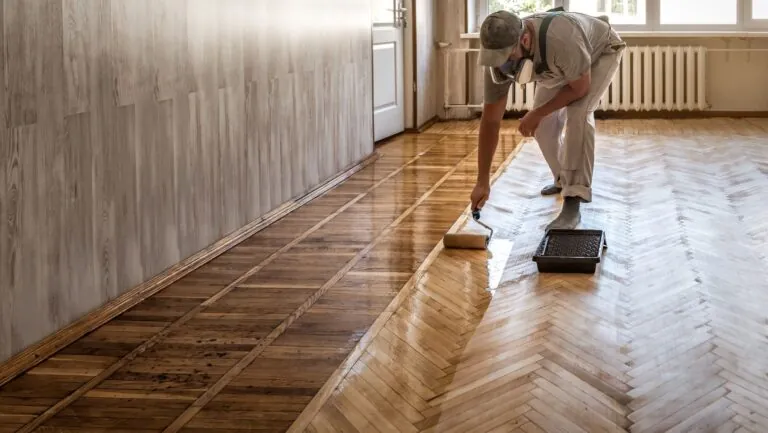You clean your phone screen, laptop, or glasses until they sparkle—only to notice fingerprints and smudges reappearing minutes later. It’s one of those everyday frustrations that seems impossible to avoid. Whether it’s shiny kitchen appliances, car touchscreens, or even mirrors, oily marks seem to follow you everywhere. But why does it happen so easily? And more importantly, how can you stop it from turning every smooth surface into a smudge magnet?
Smudges aren’t just about dirt or grime—they’re a combination of biology, chemistry, and the physical properties of modern materials. Understanding what causes them is the first step to keeping your world cleaner for longer.
Table of Contents
ToggleThe Science Behind Smudges
When you touch a surface, your skin leaves behind tiny traces of oil, sweat, and dead skin cells. This mix of substances forms what’s known as sebum, the natural oil your body produces to keep your skin soft and protected.
Every person’s sebum composition is slightly different—it contains fatty acids, waxes, and triglycerides—but the result is the same: when it meets a smooth surface, it leaves an oily residue that’s instantly visible. Add dust or microscopic debris in the air, and those streaks become even more pronounced.
Interestingly, smudges show up most clearly on shiny, reflective materials like glass, stainless steel, and glossy plastic. These surfaces don’t absorb oils, so they just sit there on top, scattering light and creating that greasy look.
Temperature and humidity can make things worse. Warm, slightly moist fingers are more likely to transfer oils, which explains why touchscreens seem to attract more fingerprints in summer than winter.
Why Modern Materials Make It Worse
If you feel like smudges are a modern-day problem, you’re not wrong. Many of the sleek materials we love today—like tempered glass, aluminium finishes, and polished ceramics—are designed for durability and aesthetics, not for resisting fingerprints. Their ultra-smooth, non-porous surfaces make oil transfer almost unavoidable.
That’s why some manufacturers are turning to innovations such as nano coating technology. These coatings use microscopic particles to create an invisible barrier that repels oil and water, making it harder for smudges to stick in the first place. They’re commonly used on phone screens, camera lenses, and even car interiors. While not completely smudge-proof, they can significantly reduce how visible those marks become.
In the absence of coatings, the materials themselves work against you. Matte finishes or textured surfaces scatter light, hiding smudges better, while glossy finishes magnify every fingerprint. It’s not that one gets dirtier than the other—it’s just that shiny surfaces show everything.
The Role of Skin Chemistry
Some people seem to leave more smudges than others, and it’s not your imagination. The natural composition of your skin plays a big role in how much residue you leave behind.
People with oily skin produce more sebum, which means their fingerprints are naturally more noticeable. Hormones, diet, stress, and even the time of day can affect oil production. Warm hands, frequent moisturiser use, or touching your face often can all increase how much oil ends up on your fingertips.
On the other end of the spectrum, those with very dry skin might leave fewer visible smudges—but they may still leave behind fine dust or skin flakes that dull surfaces over time. So while you can’t completely change your skin chemistry, understanding it helps you take practical steps to minimise the mess.
Why Some Smudges Are Harder to Remove

Ever noticed how some smudges wipe away easily, while others stubbornly smear no matter how much you rub? That’s because oils spread thinly when you wipe without actually removing them. A dry cloth simply redistributes the residue rather than lifting it off.
The longer oils sit on a surface, the more they mix with dust and oxidise, becoming stickier and harder to clean. That’s why regularly wiping screens or glass surfaces—even when they don’t look dirty—makes cleaning easier in the long run.
Cleaning products also matter. Some sprays or wipes leave behind their own residue, which can attract even more smudges. The goal is to dissolve oils and lift them off completely, not just mask them with shine.
Common Surfaces That Attract Smudges
Some surfaces are simply more prone to fingerprints than others. Here are the usual culprits:
- Touchscreens: Smartphones, tablets, and laptops collect constant oils from daily use. Heat from your fingers makes it even easier for smudges to stick.
- Glass tables and mirrors: These are perfect canvases for every touch and streak, especially in well-lit rooms.
- Stainless steel appliances: Kitchen fridges, ovens, and dishwashers show smudges instantly due to their reflective finish.
- Eyeglasses and sunglasses: Skin oils from your face and hands easily transfer to lenses, blurring vision and attracting dust.
- Car interiors: Touchscreens, glossy dashboards, and door handles all suffer the same fate under constant use.
How to Prevent Smudges Before They Happen
You can’t live in a bubble, but a few small habits go a long way toward keeping surfaces cleaner.
1. Wash your hands often
Regularly washing your hands removes natural oils, dirt, and skincare residue that contribute to smudging. You don’t have to overdo it—just a quick wash before handling electronics or glass items helps.
2. Avoid oily or heavy creams on your hands
Moisturiser is great for skin, but rich lotions can leave behind a greasy film. Opt for fast-absorbing or matte-finish formulas, especially if you handle devices frequently.
3. Keep microfibre cloths handy
Microfibre cloths are your best defence against smudges. They’re designed to trap oils and dust instead of pushing them around. Keep one near your desk, kitchen, or in your car for quick touch-ups.
4. Use screen protectors or anti-fingerprint coatings
Many screen protectors come with oleophobic (oil-repelling) coatings. They don’t make devices completely smudge-free, but they make cleaning much easier.
5. Limit unnecessary touching
It sounds obvious, but being mindful helps. Use handles instead of pushing doors open with your hand, and avoid touching mirrors or screens when you don’t need to.
The Right Way to Clean Smudges
When it comes to cleaning, technique matters just as much as tools. Here’s how to do it properly:
- Step 1: Use a soft, dry microfibre cloth to remove loose dust. This prevents scratches.
- Step 2: Lightly dampen a section of the cloth with water or a 50/50 mix of water and isopropyl alcohol. Never spray directly onto screens or glass.
- Step 3: Wipe in gentle circular motions, applying light pressure. Avoid pressing too hard, especially on electronics.
- Step 4: Use the dry part of the cloth to polish the surface, removing any streaks.
Avoid using paper towels, tissues, or abrasive cloths—they can scratch or leave lint behind. Household glass cleaners should also be used cautiously, as many contain ammonia or other chemicals that can damage coatings on screens and lenses.
DIY Tricks for Smudge Control
If you’re after extra protection, a few household hacks can help.
- Vinegar and water mix: Combine equal parts vinegar and water in a spray bottle for a gentle, streak-free cleaner (avoid using on coated electronics).
- Cornstarch polish: A tiny bit of cornstarch on a dry cloth can help buff glass surfaces and repel oil temporarily.
- Baby shampoo solution: A drop of baby shampoo in a cup of water works as a mild degreaser for glass or stainless steel.
While these aren’t permanent solutions, they’re affordable and effective for quick clean-ups.
Why Total Smudge Elimination Is Impossible
Here’s the reality: you’ll never completely stop leaving marks behind. Smudging is part of being human—it’s how our skin naturally interacts with the world. Even the cleanest, driest hands leave some trace of contact.
What you can do is minimise the appearance and make cleaning easier. Regular maintenance, mindful habits, and the right products can dramatically cut down on how noticeable smudges are.
Over time, you’ll find that surfaces stay cleaner longer, and when fingerprints do appear, they’ll be easier to wipe away. It’s not about perfection—it’s about balance between cleanliness and living comfortably.
Embracing Clean Without Obsessing
A spotless world might sound ideal, but a few smudges here and there are signs of life being lived. Your fingerprints on a phone or glass aren’t flaws—they’re reminders of interaction and connection.
Still, there’s something undeniably satisfying about a clear screen or gleaming fridge door. With a little understanding of why smudges happen and a few smart habits, you can keep things looking polished without spending your days wiping surfaces.
After all, the goal isn’t to never leave a mark—it’s to make sure the ones you do leave are easy to clean and worth it.




